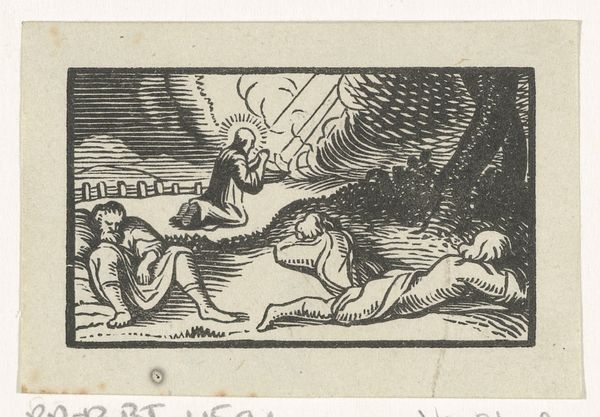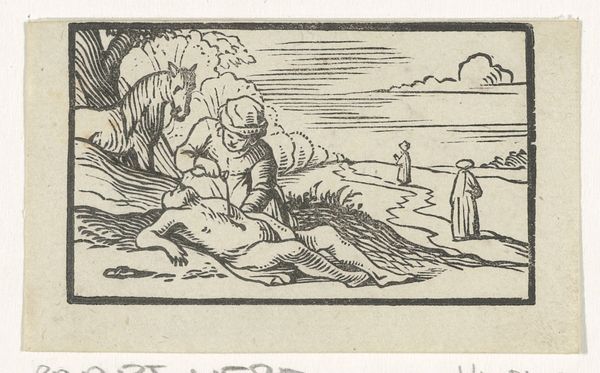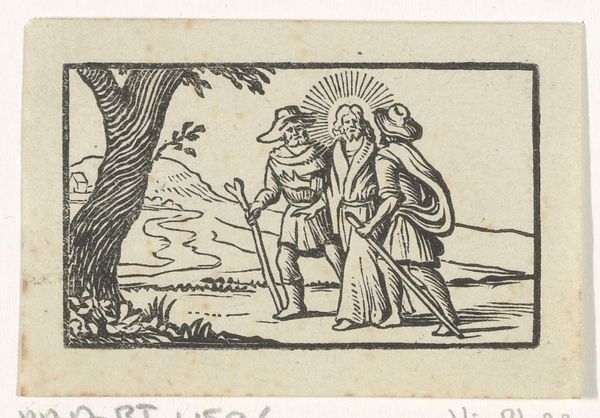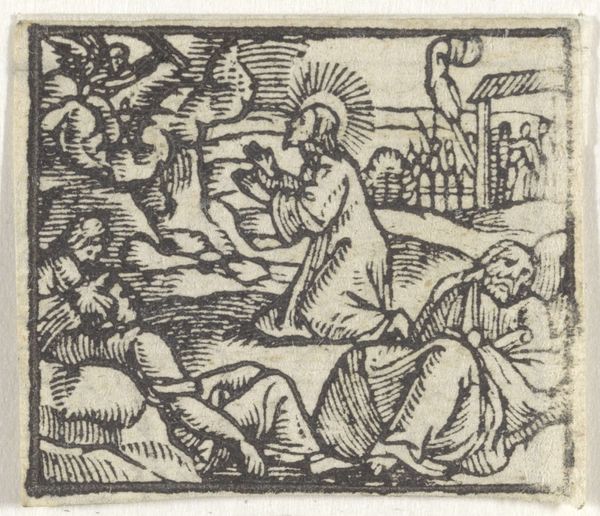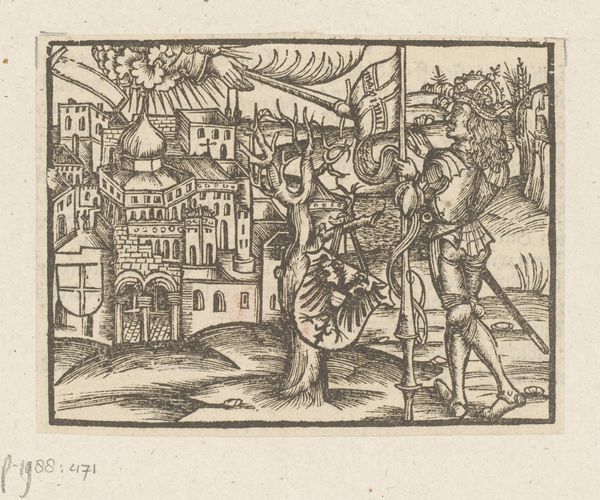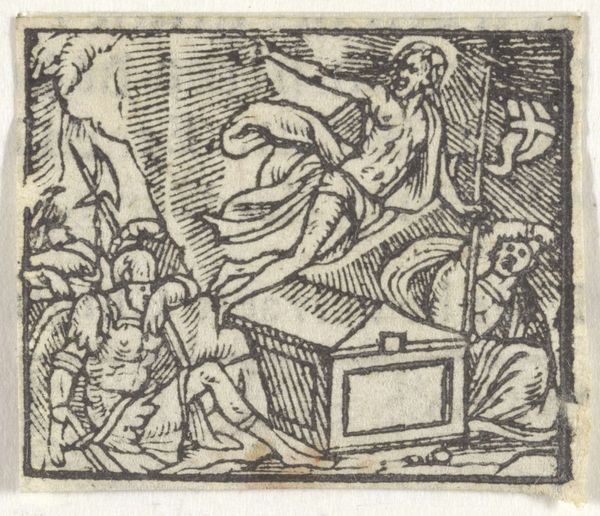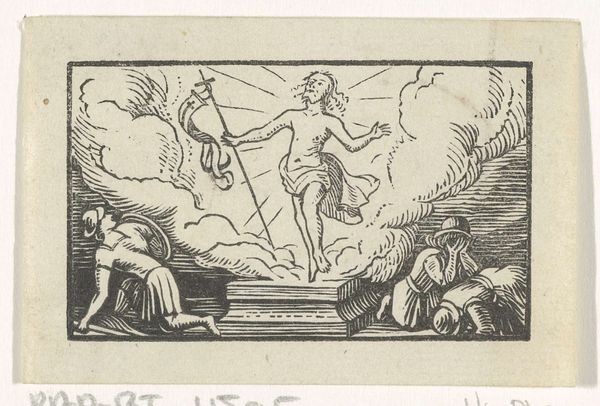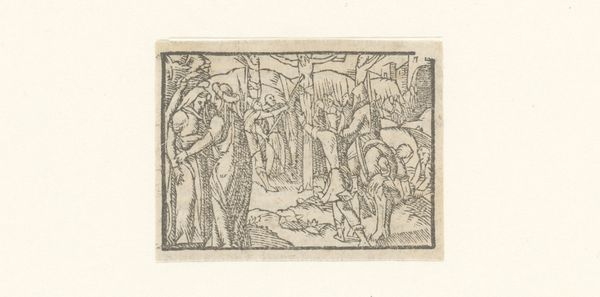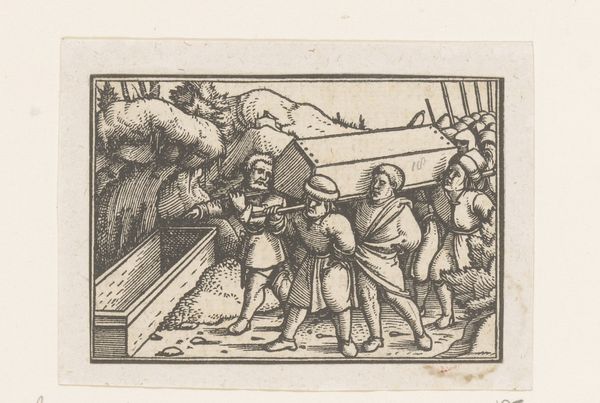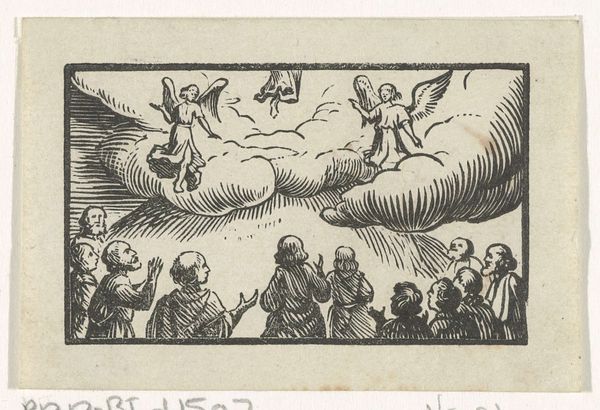
print, woodcut, engraving
#
narrative-art
#
baroque
# print
#
figuration
#
woodcut
#
line
#
history-painting
#
engraving
Dimensions: height 43 mm, width 64 mm
Copyright: Rijks Museum: Open Domain
Curator: Dirck de Bray's "Entry of Christ into Jerusalem," created between 1635 and 1694, presents a significant biblical scene through the medium of print, specifically woodcut or engraving. It’s striking, isn't it? Editor: Indeed. There’s an almost unsettling stillness to this event we know as celebratory. The figures seem strangely solemn despite the waving palms. Perhaps it speaks to the somber knowledge of what's to come, layering irony into the depicted welcome. Curator: The composition itself adheres to Baroque principles but presents them in a somewhat austere manner, given it's a black and white print. Note the contrast of dark and light, shaping forms and defining the narrative. For instance, the halo around Christ is an immediate focal point. It directs the viewer's eye instantly, doesn't it? Editor: Absolutely. The stark black and white amplifies the emotional tension; there's little room for ambiguity. It begs the question: what does such deliberate simplification communicate about faith and power? The flattened perspective, figures grouped like a frieze—it flattens hierarchies but also hints at the conformity that often underlies power structures. Even in welcome, control is at play. Curator: That's a powerful observation. I'm intrigued by your mention of conformity, because even in an image ostensibly centered on divinity, De Bray subtly weaves in universal symbols like the donkey. It stands for humility and service. How these resonate within our collective visual memory makes this image compelling across different times. Editor: I think understanding this work means viewing it as more than a purely religious representation. It invites us to examine how narratives of triumph and acceptance are often laden with unseen power dynamics and the precursor to potential betrayals. The image, though old, reminds us that these human behaviors repeat across epochs. Curator: I'm left thinking about the enduring nature of visual narratives and the subtle ways they imprint themselves upon our collective understanding. De Bray's print offers more than meets the eye, prompting ongoing dialogue across centuries. Editor: Agreed. The power of visual representation rests not just in depicting a moment but also in igniting conversations around the complex realities of faith, power, and human nature.
Comments
No comments
Be the first to comment and join the conversation on the ultimate creative platform.
